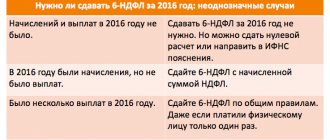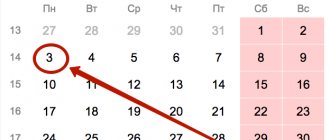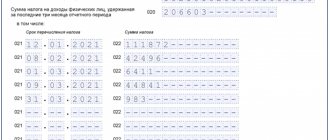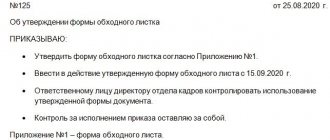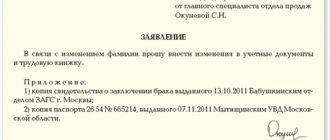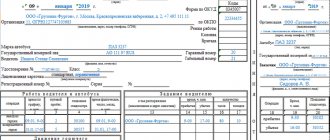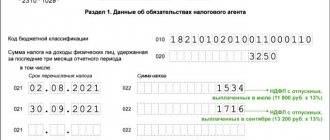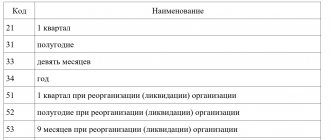Who should report for the 4th quarter of 2016
All policyholders are required to report on form RSV-1 for the 4th quarter of 2016:
- organizations and their separate divisions;
- individual entrepreneurs;
- lawyers, private detectives, private notaries.
At the same time, it is necessary for policyholders to generate RSV-1 for the 4th quarter of 2016 if they have insured persons, namely:
- employees under employment contracts;
- director is the sole founder;
- individuals - performers under civil contracts (for example, contract agreements).
If no activity was carried out
Organizations need to report in form RSV-1 for the 4th quarter of 2016, regardless of the fact of doing business from January to December 2016. It also does not matter whether there were actual wages or other payments to employees during this period. Indeed, despite this, in relation to employees, the organization is still the insurer of pension and health insurance. If you are in a similar situation, we can recommend paying attention to the article “Zero RSV-1: which sections to fill out.”
Let's talk separately about individual entrepreneurs. If an individual entrepreneur does not have employees officially registered under labor law and he did not make payments or remuneration to individuals for the period from January to December 2016, then submitting RSV-1 for 2016 is not required, since in such a situation the individual entrepreneur is not recognized as an “insurer.” If an individual entrepreneur does not have employees, then he pays contributions only “for himself.” And you are not required to submit any reports to the funds.
In what order should I fill out RSV-1?
Form RSV-1 is a title page followed by six standard sections.
All organizations, without exception, need to fill out the title page and the first two sections. The remaining sections need to be completed and submitted only if there is data for them. Sections 1 and 2 contain general information about the earnings of the organization’s employees, contribution rates, accrued and paid contributions for pension and health insurance.
Section 3 – filled out by companies with reduced insurance premium rates. In this section, they confirm their right to apply a reduced tariff.
Section 4 - it contains data on recalculations for previous reporting periods.
Section 5 - it contains information on payments and other remuneration accrued for activities carried out in the student team under labor and civil law contracts.
Section 6 – individual information about employees is described here. For each employee or working under a GPC agreement, a separate page is filled out containing information about earnings, accrued insurance contributions to the Pension Fund, as well as insurance experience for the last three months of the reporting period.
Still have questions? Watch the webinar on reporting for the 1st quarter of 2016.
New RSV-1 form for the 4th quarter of 2016
From January 1, 2022, the RSV-1 form, approved by Resolution of the Pension Fund Board of January 16, 2014 No. 2p, was cancelled. Instead, there is a new form for calculating insurance premiums, approved by Order of the Federal Tax Service dated October 10, 2016 No. ММВ-7-11/551. It must be used for reporting to the Federal Tax Service. See “Unified calculation of insurance premiums from 2022: rules for the new form.”
However, submit the report for 2016 in the form RSV-1 of the Pension Fund of Russia, approved by Resolution of the Board of the Pension Fund of January 16, 2014 No. 2p. It is necessary to use the previous format, which is used for submitting “pension” reports in electronic form. Thus, there is no new RSV-1 form for reporting for the 4th quarter of 2016. Searching for it to download on the Internet is useless. Use the old RSV-1 form.
Filling procedure
The Federal Tax Service, in its order dated October 6, 2021 No. ED-7-11/ [email protected] , described how to fill out the calculation step by step. There is also an up-to-date report form. We will tell you about the main points of filling out an insurance calculation.
The insurance calculation actually combined two forms of premiums, so at first glance it seems voluminous. Do not forget that all calculation pages are not filled out very often, because many pages are quite specific.
The contribution calculation includes a title page and three sections with subsections and appendices.
Mandatory sections for everyone who pays benefits to individuals: title page, section 1, appendix 1 (subsections 1.1 and 1.2) and appendix 2 to section 1, section 3. It is in this composition that the calculation must be submitted if the company has insured persons, to whom payments and other remunerations were made in the last 3 months. If necessary, subsections and applications are added to the calculation depending on the specifics of the company’s activities. For example, subsection 1.3 should be completed by payers who calculate contributions based on an additional tariff. If temporarily staying foreigners received income, you will have to draw up Appendix 8 to Section 1.
If no payments were made, the calculation will be zero. An example of calculation of insurance premiums can be found below. In 2022, the calculation is filled out in the same way as in 2022, but taking into account the changes that have occurred in the new form. In the zero calculation, you should submit the title page, section 1, indicating the value “2” in the “Payer Type” field, section 3, putting dashes in the empty cells. Subsection 3.2 in this case is not completed.
Important! Cost indicators are entered into the calculation in rubles and kopecks.
Submit a single calculation of insurance premiums on time and without errors! Use Extern for 14 days for free!
Try for free
Deadline for submitting annual calculations to the Pension Fund
The deadline for submitting RSV-1 for the 4th quarter of 2016 depends on the reporting method used by the company or individual entrepreneur. In the table we summarize the deadlines for submitting RSV-1 for the 4th quarter of 2016 to the territorial bodies of the Pension Fund. See “Deadline for RSV-1 for 2016.”
| Method of submitting RSV-1 for 2016 | Deadline |
| RSV-1 on paper | no later than February 15, 2022 |
| RSV-1 in electronic form | no later than February 20, 2022 |
Submit RSV-1 for the 4th quarter of 2016 to the Pension Fund of Russia, and not to the Federal Tax Service. Tax authorities will not accept reports relating to periods before 2017. See “Where to submit RSV-1 for 2016: to the Pension Fund or to the tax office?”
Who is required to report electronically via the Internet?
If your company had an average number of employees over the past 2015 of more than 25 people, you are required to submit the RSV-1 PFR form only in electronic form (Part 10, Article 15 of Law No. 212-FZ). The same obligation applies to organizations that registered in the current year, but paid income to more than 25 employees or other individuals.
Pay attention to this moment. If by law you are required to report electronically, but submitted your calculation on paper, you face a fine. The fine for such a violation is 200 rubles. (Part 2 of Article 46 of Law No. 212-FZ).
If your company paid 25 or fewer employees both last year and this year, you have a choice. You can fill out the RSV-1 calculation on paper. It can be brought to the pension fund in person or sent by mail. You also have the right to fill out the electronic calculation of the RSV-1 Pension Fund and send it to the pension fund via telecommunication channels.
Cover page: general information about the policyholder
On the title page, fill out all the cells, with the exception of the subsection “To be filled out by a Pension Fund employee.” Let's talk about some aspects of filling out annual indicators for 2016.
Clarification data
In the “Clarification number” field, enter “000” if the DAM-1 calculation for the 4th quarter of 2016 is submitted for the first time. If you are clarifying the indicators of past reports, then enter the serial number of the clarification (for example, “001”, “002”, 003...).
For what period is the calculation submitted?
In the “Reporting Period” field on the title page, display “0” (zero). In the “Calendar year” field – 2016 (despite the fact that you submit the calculation in 2022). In this way, you will inform the fund that you are presenting the annual calculation of RSV-1 for 2016.
Organization name and individual entrepreneur details
In the “Name” field, indicate the full name of the insured - organization (as in the constituent documents). If the calculation is submitted by an individual entrepreneur, then his last name, first name, and patronymic are included (as in the passport).
OKVED: what classifier
Until January 1, 2022, two classifiers of OKVED codes were in effect: the old OK 029-2001 and the new OK 029-2014. Which of these classifiers should I use? Let me explain.
Organizations or individual entrepreneurs that are registered as such after July 11, 2016, indicate in the calculation of RSV-1 for the 4th quarter of 2016 the encoding from the new classifier OK 029-2014 (approved by order of Rosstandart dated January 31, 2014 No. 14-st) .
If a company or individual entrepreneur was registered with the Pension Fund of Russia before July 11, 2016, then you can mark the codes from the old classifier OK 029-2001 or the new OK 029-2014. That is, in this case, there is a choice. The fact is that the “old” classifier can be used, since it is referenced in paragraph 5.8 of Appendix No. 2 to the Resolution of the Pension Fund Board of January 16, 2014 No. 2p. This rule is still in effect. Accordingly, officials of the territorial bodies of the Pension Fund of the Russian Federation do not have the right to “force” only new codes according to the OK 029-2014 classifier to be indicated in the annual calculation. Also see “OKVED reduced tariffs of insurance premiums”.
Number of insured persons
In the “Number of insured persons” field, indicate the total number of employees for whom insurance premiums were paid, in accordance with the number of sections submitted in Section 6 of the calculation with the type of information “initial” (clause 5.10 of Section II of the Procedure, approved by the Resolution of the Pension Fund Board of January 16, 2014 No. 2p). Here is an example of filling out a title page.
When filling out the “Average number of employees” field of RSV-1 for the 4th quarter of 2016, take into account the procedure for calculating the number of employees that you use when preparing statistical reporting. That is, there are no special features when filling out RSV-1.
Section 2: Amounts of payments and contributions
Section 2 summarizes the amounts of accrued remuneration (payments) and insurance premiums. It consists of the following subsections:
- 2.1 “Calculation of insurance premiums according to the tariff” - must be generated by everyone;
- 2.2 “Calculation of insurance premiums at an additional tariff” - group if there are workers employed in hazardous industries;
- 2.3 “Calculation of insurance premiums at an additional rate” - generalize if there are workers employed in heavy production.
Section 2 also reflects temporary disability benefits and “children’s” benefits (at the birth of a child, for registration in the early stages of pregnancy, for pregnancy and childbirth and for caring for a child up to 1.5 years old). The amount of benefits paid in subsection 2.1 of the calculation for the 4th quarter of 2016 is shown in lines 201, 211 of subsection 2.1 (as part of non-taxable payments). However, if your region is participating in the FSS pilot project, then benefits are not required to be reflected in Section 2. See “Participants in the FSS pilot project.”
Here is an example of filling out Section 2.1, which is mandatory for everyone. Please note: if from January to December 2016 insurance premiums were calculated at only one rate, subsection 2.1 must be completed once. If contributions were calculated at different rates, create a subsection for each rate.
Section 4: additional charges and adjustments
Section 4 is presented as part of RSV-1 for the 4th quarter of 2016 only in some cases, namely:
- The PFR division has assessed additional insurance premiums based on reports of desk or on-site inspections, for which in the 4th quarter of 2016 decisions on holding (or refusing to hold) accountable came into force, as well as if the Pension Fund has identified excessively accrued amounts of contributions.
- an organization or individual entrepreneur independently discovered an understatement of insurance premiums in previous periods (both for the 4th quarter of 2016 and for previous periods);
- the organization independently adjusts the basis for calculating insurance premiums of previous periods based on accounting data that is not recognized as an error.
When to submit the RSV-1 reporting form
The reporting form in question is quarterly. Depending on how many employees there are in the company, it can be submitted at different times and in different forms. If the number of employees does not exceed 25 people, then the RSV-1 report is submitted in paper form by the 15th day of the second month following the reporting quarter. If the number of employees exceeds 25 people, the report is submitted electronically by the 20th day of the second month following the reporting quarter. For example, reporting for the 2nd quarter of 2016 must be submitted on paper by August 15, and electronically by August 22 due to the fact that August 20, 2016 is a holiday.
Section 6: Personalized Reporting
Compile this section as part of RSV-1 for the 4th quarter of 2016 for each employee. Please keep in mind that section 6 of the RSV-1 Pension Fund form for 2016 is filled out for the period from January to December 2016 for each person:
- who was in an employment relationship;
- with whom a civil (or copyright) contract was concluded.
Form Section 6 both for those individuals who received payments and rewards (for example, wages) from January to December 2016 inclusive, and for those who were in an employment relationship, but payments were not accrued to them during this period. That is, if a person was on leave without pay in the 4th quarter of 2016, then this employee must also be recorded in Section 6. Moreover, if the employee quit in previous reporting periods (for example, in the first quarter), then in RSV-1 for the 4th quarter of 2016, do not include information about him in the sixth section of the annual reporting.
Subsection 6.1: data of an individual
In subsection 6.1, indicate the last name, first name and patronymic of the individual and enter his SNILS.
Subsection 6.2: reporting period
In the “Reporting period (code)” field of RSV-1 for 9 months of 2016, enter the code “0”, and in the “Calendar year” field - 2016.
Subsection 6.3: type of information
In subsection 6.3 of the annual RSV-1, indicate the type of information adjustment:
- or "original";
- or “corrective”;
- or "cancelling".
Required field o. The “Original” field is provided for information that is being submitted for the first time. When submitting initial information, the fields “Reporting period (code)” and “Calendar year” in subsection 6.3 of the report for the 4 quarters of 2016 are not filled in.
The “adjusting” field in RSV-1 for the 4th quarter, if you are clarifying previously submitted information about a person. If you completely eliminate information about him, then select the “cancelling” field. For any of these types of data, in the “Reporting period (code)” and “Calendar code” fields, indicate the reporting period code and the year for which the information is being updated or canceled. At the same time, submit sections 6 in which o or “cancelling” together with section 6 with the “initial” type for the reporting period for which the reporting deadline has arrived. That is, together with RSV-1 for the 4th quarter of 2016.
Subsection 6.4: payments to the employee
In subsection 6.4 of the annual RSV-1, highlight the amounts of payments and other benefits accrued to the employee. For these purposes
- in line 400 - show all payments since the beginning of 2016 on a cumulative basis;
- in lines 401 - 403 - show payments for October, November and December 2016 (that is, for the 4th quarter).
In columns 4, 5, 6 and 7 of this subsection, post the payments transferred to an individual within the framework of labor relations or under civil contracts. Moreover, highlight separately the amount paid within the base for calculating “pension” contributions, and the amount that exceeds this amount. In 2016, the maximum base, we recall, is 796,000 rubles (Resolution of the Government of the Russian Federation dated November 26, 2015 No. 1265).
Column 3, as you can see, indicates the category code of the insured person in accordance with the Classifier of parameters used when filling out personalized information (Appendix No. 2 to the Procedure). The most frequently used code is “NR”, associated with employees who are subject to the basic tariff for calculating insurance premiums (22%).
Subsection 6.5: Payments within the Base
In subsection 6.5, indicate the amount of pension contributions accrued at all insurance premium rates in October, November and December 2016 from payments and other remunerations not exceeding the maximum base value (796,000 rubles). Let's explain with an example:
Subsection 6.6: Adjustments
Fill out subsection 6.6 in forms with the “original” information type if the data presented in previous reporting periods were adjusted in October, November or December 2016. If there is data in this subsection, then it is also required to submit corrective (cancelling) sections 6 of the calculation and (or) forms SZV-6-1, SZV-6-2, SZV-6-4 for the past. If there are no adjustments, then do not fill out this subsection and leave it blank.
Subsection 6.7: early retirement
In this subsection, show payments to employees employed in jobs with special working conditions (harmful, difficult, etc.), giving the right to early retirement. For example, in subsection 6.7 of the RSV-1 calculation for the 4th quarter of 2016, indicate:
- in line 700 - the amount of payments on an accrual basis since 2016;
- in lines 701 - 703 - payments for October, November and December 2016 (that is, for the 4th quarter).
If the organization has carried out a special assessment of working conditions, in column 3 you need to enter the special assessment code according to the code classifier (according to Appendix No. 2 to the Procedure).
Subsection 6.8: information about experience
This subsection indicates the working conditions in which the employee worked in October, November and December 2016 (that is, in the 4th quarter), as well as data on the length of service and conditions for early assignment of a pension.
Group the columns “Beginning of period” and “End of period” in the format dd.mm.yyyy. Here is a sample of filling out columns 2 and 3 of subsection 6.8 of the RSV-1 for 2016, if the employee works in October, November and December 2016.
Please note that columns 4-9 of subsection 6.8 will be filled out using codes in accordance with Appendix No. 2 to the Procedure. So, for example, in column 7 you need to highlight some periods of the employee’s work experience that took place in the fourth quarter of 2016. Let us explain some common codes that may be required when filling out RSV-1 for the 4th quarter of 2016.
| Column code 7 | What does it mean |
| CHILDREN | Parental leave until the child reaches the age of one and a half years, granted to one of the parents |
| DECREE | Maternity leave |
| AGREEMENT | Work under civil contracts that extends beyond the billing period |
| DLOTPUT | Staying on paid leave |
| NEOPL | Vacation without pay, downtime due to the fault of the employee, unpaid periods of suspension from work (preclusion from work) |
| VRNETRUD | Period of temporary incapacity for work |
| QUALIFY | Off-the-job training |
| ACCEPTANCE | Additional leave for employees combining work and study |
| NEOPLDOG | The period of work of the insured person under a civil law contract, payments and other remunerations for which are accrued in the following reporting periods |
RSV-1 section 1
Section 1 is mandatory for all policyholders. It is handed over, including by those whose calculation does not contain indicators, that is, the activity was not carried out or there were no payments to employees. In this case, dashes are placed in place of the indicators.
Section 1 summarizes the indicators of all other sections of the RSV-1, including the amounts of contributions not only to the Pension Fund, but also to the Compulsory Medical Insurance Fund, so it is better to fill it out last, when all other parts of the report are ready.
Section III of the Procedure for filling out the RSV-1 PFR form (approved on January 16, 2014 by resolution of the PFR Board No. 2p) contains the relationships between the lines of section 1 and the indicators of other sections that must be observed when preparing the report. Let's analyze filling out section 1 for each of its lines:
Line 100 shows what debt or overpayment of premiums was owed by the policyholder at the beginning of the year. The indicators of all columns of line 100 of the report for 2016 must correspond to the indicators of the same columns of line 150 of the report for 2015.
Please note that if in the report for 2015 in column 4 line 150 there was an overpayment, then in the report for 2016 in column 3 line 100 we take the sum of the values in columns 3 and 4 lines 150 for 2015, while in column 4 there cannot be minus value.
Line 110 – contributions accrued for the entire 2016 are equal to the sum of the indicators in line 110 of the RSV-1 for 9 months of 2016 and line 114 of the annual report. Also, line 110 must be equal to the amount of contributions from sections 2.1, 2.2, 2.3 and 2.4 of the annual report. If during the year the right to apply a reduced tariff arises or is lost, these ratios will not be met.
Lines 111, 112, 113 reflect contributions for the last three months: the period October-December for the DAM-1 report for 2016.
- The indicator in column 3 of each of these lines is equal to the sum of lines 205 and 206 of subsection 2.1, in columns 4, 5 and 6, respectively.
- Column 6 for each line corresponds to the sum of lines 224 of subsection 2.2, column 4, 5 or 6, and lines 244, 250, 256,262, 268 of subsection 2.4, column 4, 5 or 6 with base code “1”.
- Column 7 for each line: the sum of lines 234 of subsection 2.3 (column 4, 5 or 6), and lines 244, 250, 256, 262, 268 of subsection 2.4 (column 4, 5 or 6) with base code “2”.
- Column 8 reflects contributions to compulsory medical insurance; its value for each line corresponds to the value of lines 214 (column 4, 5 or 6) for all tariffs.
Line 114 summarizes the indicators of lines 111, 112 and 113.
Line 120 reflects recalculations and is filled in in the following cases:
- in the reporting period, an audit of the Pension Fund of the Russian Federation revealed violations, and additional amounts of contributions were accrued according to the act, or excessively accrued insurance premiums were identified,
- the policyholder himself identified incomplete data reflection or found errors leading to an underestimation of the taxable base and contributions for past periods.
- In columns 3, 4 and 5, line 120 is equal to the value of columns 6, 8 and 10 in the final line of section 4.
- In column 6, line 120 is equal to the value of column 11 in the final line and the sums of all lines in column 13 with the base code “1” of section 4.
- In column 7, line 120 is equal to the value of column 12 in the final line and the sums of all lines in column 13 with the base code “2” of section 4.
Line 121 – from line 120, the amount of recalculation of contributions accrued from exceeding the maximum base is allocated. In 2016, the base for contributions to the Pension Fund at a rate of 22% is 796,000 rubles, everything above this amount is subject to a 10% tariff. There is no base limit for contributions to the Compulsory Medical Insurance Fund in 2016.
Columns 3 and 4 correspond to columns 7 and 9 on the final line of section 4.
Line 130 sums the values of lines 100, 110, and 120 of section 1.
Line 140 reflects the payment of contributions from the beginning of the year. Its value is equal to the amount of contributions transferred in the previous reporting period and for the last quarter, that is, the sum of lines 140 of the calculation for 9 months and 144 of the annual calculation. In line 140, the indicator in column 4 cannot exceed the indicator in column 4 of line 130.
Lines 141, 142 and 143 are the amounts paid in the last quarter. In the calculation for 2016, we reflect the payment in October, November and December, respectively.
Line 144 summarizes the contributions paid for the last quarter on lines 141, 142 and 143.
Line 150 summarizes all of Section 1, reflecting overpayments or unpaid contributions at the end of the year. To do this, subtract line 140 from line 130. In this case, column 4 of line 150 cannot be with a minus if there is no negative value in column 4 of line 120.
Control ratios
Next, we present the control ratios on the basis of which the programs of the Pension Fund of the Russian Federation will begin to check the calculation of DAM-1 for the 4th quarter of 2016.
| Section 1 value | What is equal to |
| Line graphs 100 | Columns of line 150 of section 1 of RSV-1 for 2015 |
| Line 110 column 3 | The sum of lines 205 and 206, column 3 of all subsections 2.1 |
| Line 110 column 8 | The sum of lines 214 columns 3 of all subsections 2.1 |
| Line 120, column 3 (if this line is filled in) | Line “Total conversion amount”, column 6, section. 4 |
| Line 120, column 8 (if this line is filled in) | Line 120, column 8 (if this line is filled in) |
Next, you can complete the RSV-1 calculation for the fourth quarter of 2016.
Composition of the annual calculation of RSV-1
The RSV-1 calculation is submitted regardless of whether activities were carried out and whether wages and other benefits were accrued to employees in January-December 2016. The RSV-1 calculation for 2016 must include sections 1 and 2.1, as well as a title page. In this configuration, the zero calculation RSV-1 is delivered.
Individual entrepreneurs who did not have employees during 2016 and did not pay remuneration to individuals should not submit the RSV-1 form.
